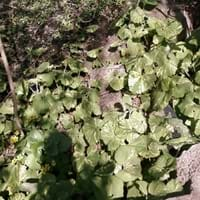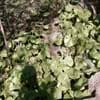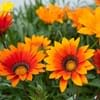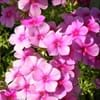Life Span
Perennial
Perennial
Type
Herbs
Bulb or Corm or Tuber
Origin
China, Japan, Korea
Hybrid origin
Types
Not Available
Not Available
Habitat
gardens, Grassland, Homesteads, Open areas
tropical environments
USDA Hardiness Zone
5-9
8-11
AHS Heat Zone
9-4
Not Available
Sunset Zone
2a, 2b, 3a, 3b, 4, 5, 6, 7, 8, 9, 10, 14, 15, 16, 17, 18, 19, 20, 21, 22, 23, 24
21,22
Habit
Clump-Forming
Clump-Forming
Flower Color
Light Yellow, Ivory
White, Red, Light Pink
Flower Color Modifier
Bicolor
Bicolor
Fruit Color
Not Available
Green, Brown
Leaf Color in Spring
Green, Light Green, Light Yellow, Ivory
Green, Dark Green
Leaf Color in Summer
Green, Light Yellow, Ivory
Light Green
Leaf Color in Fall
Green, Light Yellow, Ivory
Several shades of Green
Leaf Color in Winter
Not Available
Light Green
Leaf Shape
Round
Long Linear
Plant Season
Spring, Summer, Fall
Spring, Summer, Winter
Sunlight
Partial shade, Full Shade
Full Sun, Partial Sun
Type of Soil
Clay, Loam, Sand
Loam, Sand
The pH of Soil
Acidic, Neutral, Alkaline
Acidic, Neutral
Soil Drainage
Poorly Drained
Well drained
Bloom Time
Early Spring, Late Winter
Not Available
Tolerances
Wet Site
Deer resistant
Where to Plant?
Ground, Pot
Container, Ground, Pot
How to Plant?
Divison, Stem Planting
Divison, From Rhizomes, Tubers
Plant Maintenance
Medium
Low
Watering Requirements
Allow soil to be completely dry in between waterings, Keep ground moist, Needs 2-3 times watering per week, Over-head watering, Requires watering in the growing season
Average Water Needs
In Summer
Lots of watering
Lots of watering
In Spring
Moderate
Moderate
In Winter
Average Water
Average Water
Soil pH
Acidic, Neutral, Alkaline
Acidic, Neutral
Soil Type
Clay, Loam, Sand
Loam, Sand
Soil Drainage Capacity
Poorly Drained
Well drained
Sun Exposure
Partial shade, Full Shade
Full Sun, Partial Sun
Pruning
Remove deadheads, Requires very little pruning, Shape and thin as needed
Cut or pinch the stems, Remove damaged leaves, Remove dead branches, Remove dead leaves
Fertilizers
All-Purpose Liquid Fertilizer
as it is a flowering plant, use high phosphorous content fertilizer, Nitrogen, Phosphorous, Potassium, Requires high amount of nitrogen
Pests and Diseases
Pests and diseases free, Red blotch
Aphids, Grasshoppers, Mealybugs, Mites, Red blotch, Slugs, Snails
Plant Tolerance
Wet Site
Deer resistant
Flower Petal Number
Not Available
Not Available
Edible Fruit
No
Not Available
Fragrant Flower
Yes
Not Available
Foliage Texture
Bold
Medium
Foliage Sheen
Glossy
Glossy
Attracts
Not Available
Bees, Butterflies, Hummingbirds
Allergy
no allergic reactions
poisonous if ingested
Aesthetic Uses
Showy Purposes
Beautification, Bouquets, Cottage Garden, Showy Purposes
Beauty Benefits
Not Available
Not Available
Environmental Uses
Air purification
Not Available
Medicinal Uses
No Medicinal Use
Not Available
Part of Plant Used
Whole plant
Flowers
Other Uses
Not Available
Used as Ornamental plant, Used for bedding in gardens
Used As Indoor Plant
Yes
Yes
Used As Outdoor Plant
Yes
Yes
Garden Design
Bog Garden, Container, Feature Plant, Water Gardens
Container, Cutflower, Houseplant, Mixed Border, Tropical
Botanical Name
PETASITES japonicus 'Variegatus'
HIPPEASTRUM 'Picotee'
Common Name
Giant Butterbur, Japanese Butterbur, Variegated Butterbur
Florist Amaryllis, Hippeastrum, Picotee Hippeastrum
In Hindi
variegated butterbur
HIPPEASTRUM
In German
bunte Pestwurz
HIPPEASTRUM
In French
pétasite panachée
HIPPEASTRUM
In Spanish
butterbur abigarrado
Hippeastrum
In Greek
διαφοροποιημένα butterbur
Hippeastrum
In Portuguese
butterbur variegada
HIPPEASTRUM
In Polish
barwny Lepiężnik
Hippeastrum
In Latin
varius butterbur
Hippeastrum
Phylum
Not Available
Magnoliophyta
Class
Not Available
Magnoliopsida
Order
Asterales
Asparagales
Family
Asteraceae
Amaryllidaceae
Genus
Petasites
Amaryllis
Clade
Angiosperms, Asterids, Eudicots
Angiosperms, Monocots
Tribe
Senecioneae
Not Available
Subfamily
Not Available
Amaryllidoideae
Season and Care of Variegated Butterbur and Hippeastrum
Season and care of Variegated Butterbur and Hippeastrum is important to know. While considering everything about Variegated Butterbur and Hippeastrum Care, growing season is an essential factor. Variegated Butterbur season is Spring, Summer and Fall and Hippeastrum season is Spring, Summer and Fall. The type of soil for Variegated Butterbur is Clay, Loam, Sand and for Hippeastrum is Loam, Sand while the PH of soil for Variegated Butterbur is Acidic, Neutral, Alkaline and for Hippeastrum is Acidic, Neutral.
Variegated Butterbur and Hippeastrum Physical Information
Variegated Butterbur and Hippeastrum physical information is very important for comparison. Variegated Butterbur height is 60.00 cm and width 120.00 cm whereas Hippeastrum height is 38.10 cm and width 30.10 cm. The color specification of Variegated Butterbur and Hippeastrum are as follows:
Variegated Butterbur flower color: Light Yellow and Ivory
Variegated Butterbur leaf color: Green, Light Green, Light Yellow and Ivory
Hippeastrum flower color: White, Red and Light Pink
- Hippeastrum leaf color: Green and Dark Green
Care of Variegated Butterbur and Hippeastrum
Care of Variegated Butterbur and Hippeastrum include pruning, fertilizers, watering etc. Variegated Butterbur pruning is done Remove deadheads, Requires very little pruning and Shape and thin as needed and Hippeastrum pruning is done Cut or pinch the stems, Remove damaged leaves, Remove dead branches and Remove dead leaves. In summer Variegated Butterbur needs Lots of watering and in winter, it needs Average Water. Whereas, in summer Hippeastrum needs Lots of watering and in winter, it needs Average Water.





